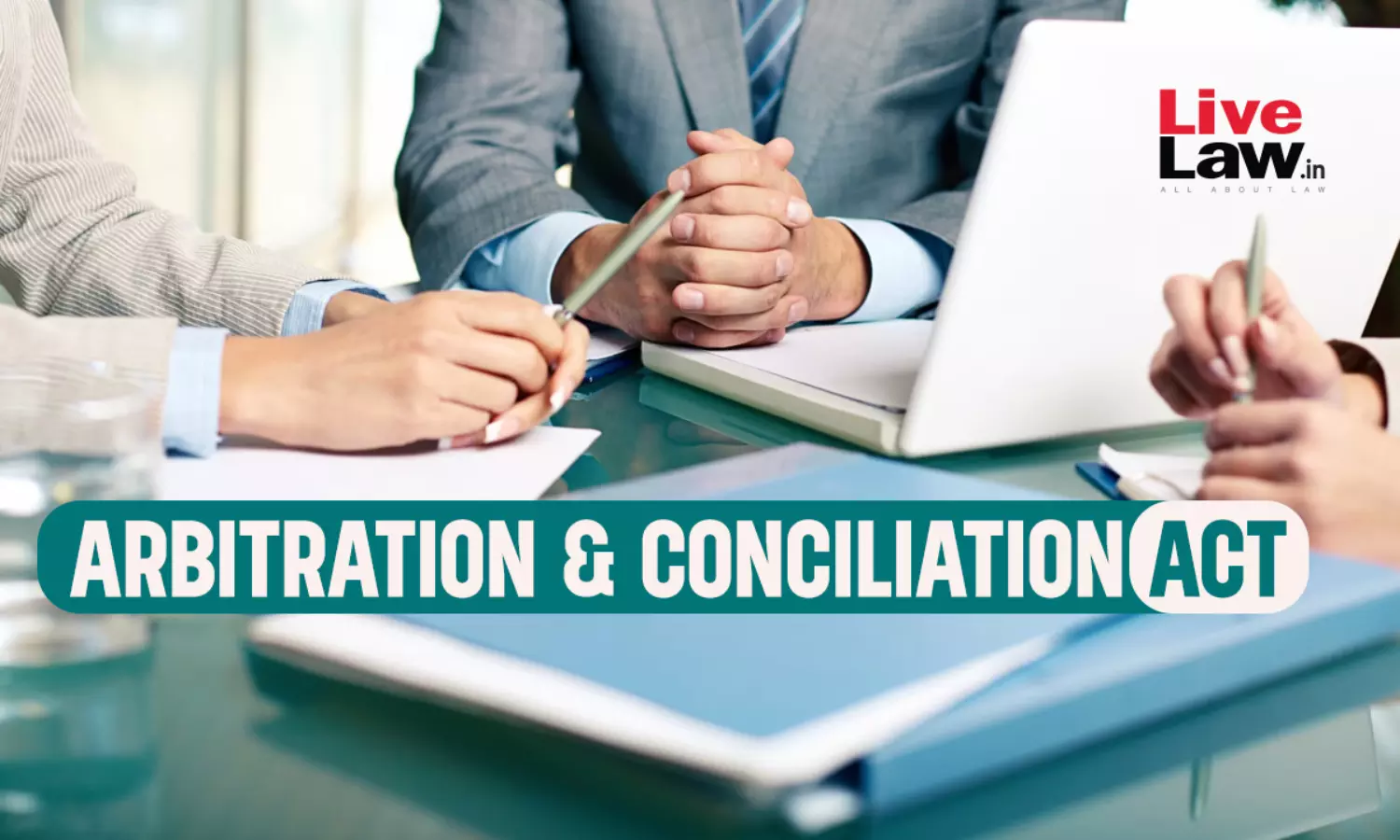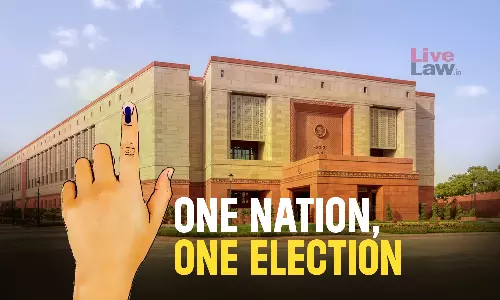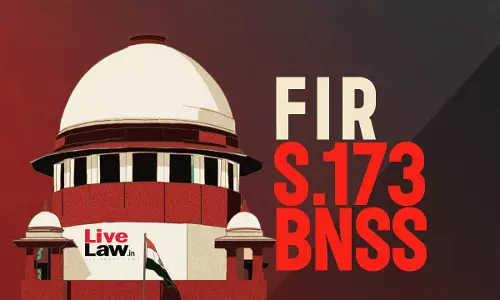The Interplay Between Section 33 And Section 34 Of The Arbitration Act And Its Impact On Limitation Period

Settling disputes through arbitration has become the order of the day, with the disputing parties finding it cost-effective, flexible, and fast-paced. However, the outcome of an arbitration in the form of an arbitral award, may not be satisfactory on various occasions, hence, the aggrieved party can seek recourse for setting aside such an award. In India, Section 34 of the...
Settling disputes through arbitration has become the order of the day, with the disputing parties finding it cost-effective, flexible, and fast-paced. However, the outcome of an arbitration in the form of an arbitral award, may not be satisfactory on various occasions, hence, the aggrieved party can seek recourse for setting aside such an award. In India, Section 34 of the Arbitration and Conciliation Act, 1996 (A&C Act, hereinafter) elaborates the grounds on which an arbitral award may be set aside and Section 33 of the A&C Act grants the arbitral tribunal the power to correct and interpret the award and even grant an additional award, if knocked at the door by one of the disputing parties. Sometimes the question arises as to the interpretation of Section 33 of the A&C Act vis-a-vis the date on which an application for setting aside an arbitral award may be filed in a court of law, that is to say, will the limitation period run from the date when the arbitral tribunal disposed of the application under Section 33 of the A&C Act or would it have no bearing on the time period for challenging the arbitral award under Section 34 of the A&C Act.
Section 34(3) A&C Act provides a limitation of three months to set aside an arbitral award. A party applying to set aside the award has to file such an application within three months from the date of receiving the award. However, in some cases, where the party has also applied under Section 33, the limitation prescribes three months from the date upon which the tribunal has disposed of the request. Also, there exists a discretion to grant an extension of up to thirty additional days for a reasonable cause for filing an application for setting aside the arbitral award, but such extension is strictly capped at those extended thirty days and the court cannot entertain the application after such period has elapsed.
Section 33 of the A&C Act on the other hand, states that parties may seek remedies from the arbitral tribunal itself, immediately after an award has been made, in the event of a mistake such as clerical or arithmetic error in the award or to request the tribunal to clarify certain parts of the award, that are ambiguous.
Interestingly, even the time-bound challenge of Section 34(3) gets usurped, if a party invokes Section 33. The point of ambiguity is that, if the party can file a petition for setting aside the award only after the tribunal has disposed of the request under Section 33, does it imply an extension to which only the parties who have filed a request under Section 33 will be benefited or all the parties, irrespective of such request.
The Supreme Court of India, in M/S Ved Prakash Mithal and Sons v. Union of India, (SLP (C) No. 20195/2017, discussed the interface between Section 34(3) and Section 33 of the A&C Act. The court held that for purposes of Section 34, the limitation period runs from the date when the application filed under Section 33 is "disposed of" by the Arbitral Tribunal. It covers both the scenarios of granting and rejecting an application. The judgment is in line with the well-settled legal position that, in case the Arbitral Tribunal has disposed of an application under Section 33, the limitation period to challenge an arbitral award under Section 34 operates from the date of disposal of that Section 33 application.
Recently, in PrimeInterglobe Private Limited v. Super Milk Products Private Limited, 2024 LiveLaw (Del) 1032, the Delhi High Court, ruled that the limitation period for filing a Section 34 petition, can be extended up to 30 days from the initial three-month period, but such an extension would only take effect from the date when the Section 33 application was disposed of. This would mean that if a party had applied under Section 33, it could calculate its limitation period working back from the date of disposal of such an application, thereby getting some time to assail the award. Furthermore, it was held that the advantage of the said extended limitation period could be taken by the parties' applications jointly. The ratio of the judgment focused on the fact that Section 34(3) imposes no restriction as to who applied for the Section 33 application but uniformly extends it to all parties based on the resolution of the Section 33 application.
Again, in SalteeProductions Private Limited v. Indus Towers Limited, CO 3521 of 2023, the High Court of Calcutta held that the limitation period runs from the date when the Tribunal disposes of the Section 33 application, which can result in correction or interpretation of the award. The Court also held that the time taken by the Tribunal to communicate its decision or correct the award is excluded from the limitation period. This interpretation also aligned with Section 43 of the Act which imported the Limitation Act, 1963, into arbitration proceedings. The rationale for exclusion was that it did not cause undue curtailment of the limitation period to be brought in for filing objections.
In Union of India v. M/S Baba Rangi Ram Pvt. Ltd. and Anr., FAO No.9519 of 2014, the Punjab and Haryana High Court also shed valuable light on the interpretation of Section 33 vis-a-vis its interaction with Section 34 of the A&C Act. It was held that corrections under Section 33 are restricted to arithmetical or clerical errors and cannot be brought at par with, or treated as a review, of the arbitral award. It was clarified that where correction under Section 33 is made, the original award merges with the corrected one and invokes by its very nature the principle of merger. The limitation period to challenge the award under Section 34(3) runs from the date when it gets disposed of and not from the date of the original award. Furthermore, the court held that Section 33(1)(a) restricts the suo moto power of an arbitrator to correct the award and this does not prejudice the merits if clarification is sought. If the corrections made by the arbitrator are minor, then the limitation period runs from receipt of the original, uncorrected award. However, the limitation period will run from the date of disposal of such an application filed under Section 33 for clarification.
The upshot of the aforesaid discussion is that the limitation period runs from the date of disposal of an application under Section 33 by the arbitral tribunal itself while challenging the arbitral award under Section 34(3) of the A&C Act. The challenge limit period begins to run if the Section 33 application succeeds in correcting errors or is dismissed so that the parties have a proper amount of time to consider any correction or clarification made before challenging an award. Both as a matter of course and uniformly available, the courts hold that the extended limitation period under Section 34(3) applies to both parties, irrespective of who makes the Section 33 application.
Therefore, the period of limitation for filing an application for setting aside an arbitral award would run from the date on which an application, if any, was disposed of by the arbitral tribunal under Section 33. Whenever the arbitral tribunal takes its time in correcting or interpreting the award or even granting the additional award, it can never be enunciated that the time period taken by the arbitral tribunal cannot be taken into account while computing the period of limitation for the purpose of filing an application under Section 34 of the A&C Act as it is never the parties who can be made responsible for the delay in filing the Section 34 petition when the tribunal was in seisin of the application under Section 33. The benefit of determining the period of limitation for filing the petition under Section 34 from the date on which the Section 33 application is disposed of by the tribunal, has not been made statutorily dependent on the party who has filed the Section 34 application as the intention of the legislature gives the benefit to both the parties and not to one party alone.
Chetna Alagh is an Advocate practicing before the High Court of Delhi. Views are personal.




